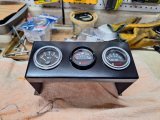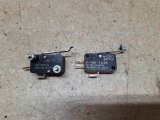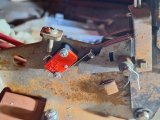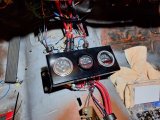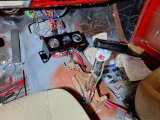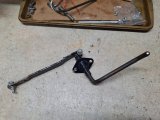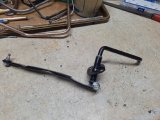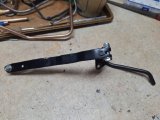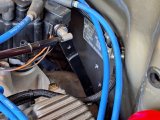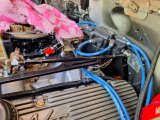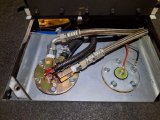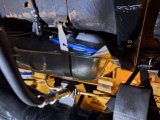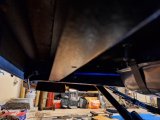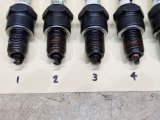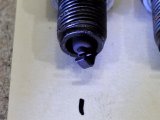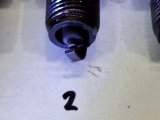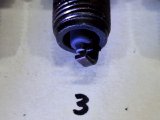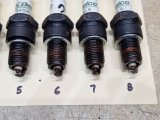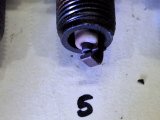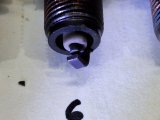Center Console ......
Well it's not really a console yet, just the stuff needed to drive the car.
I went by my local steel supply - they have drops, which are the remaining cut pieces, priced at a fraction of the price of the original steel sheet/shape. I stocked up on 16ga sheet steel and a lot of drops, about 4 ft lengths of tube, angle, flat bar, solid round bar, etc. In this crap economy, any savings is needed, and it gives me a lot of available steel in the shop, comes in really handy.
I've got water temp and oil pressure gauges in the dash, but I need to have transmission temp, volts, and fuel level as well. I've also got that 6-led indicator panel finished, so the dash itself is pretty much done. Just some switches and the decorative trim panel and glovebox.
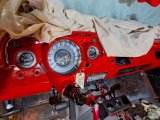
For now, until the interior work starts, I just need something sturdy to put the gauges into. I started with my favorite template material - cardboard. Fiddled with what I wanted in the car, and came up with this 16 ga sheet steel shape.

My handy-dandy homemade bender in my hand-dandy homemade 20 ton press worked really nicely.
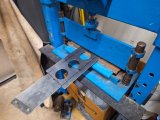
I'll go back and add some corner stiffeners but wanted to get this made and fit to the car.
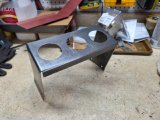
Over the past couple of days I routed all the needed wiring for the gauges, neutral safety, and line-lock to the (future) center console area.
The new gauge panel fit fine, I used my favorite - rivet nuts - to secure it in place.
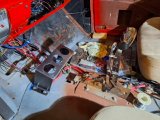

Aside from a general cleanup of this work area, this is pretty much how it's going to look until I start on the interior.
First things first - I need to be able to drive the car to get both the engine and transmission broken in and of course to see if there's any issues that come up. Running a car on stands is one thing, running it on the road is quite another.
Edit - got the gauge panel painted, I really like using caliper paint. Nice gloss but not over the top.
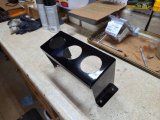
Edit - started putting the gauges into the panel. I got a black ring gauge by mistake for the trans temp but I'll use it, this is a setup for now until there's an actual console.
